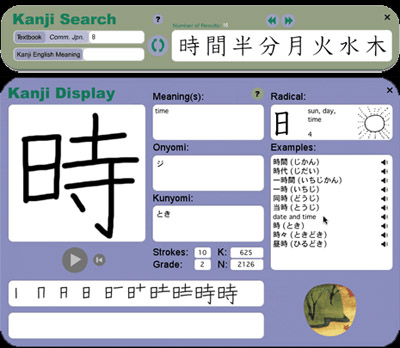|
||
     |
Picture this: kanji on the Web
Her Japanese 101 students kept the questions coming, hoping to master kanji, the language’s writing system. Kanji is hard to learn, explains Harumi Lory, senior lecturer in East Asian Languages & Civilizations. But teaching the complex characters was cutting into conversation practice. “There was a dilemma between student demands and classroom needs.”
To reclaim class time and still satisfy the undergrads’ appetite for kanji, Lory turned to technology. After a colleague showed her a tool that digitizes characters, the Web site Kanji Alive began development (kanjialive.lib.uchicago.edu). The program currently allows users to search among 851 characters by criteria such as textbook lesson number. It then displays the kanji, with related information including its English meaning and how to write it stroke by stroke.
The brainchild of a large University team, Kanji Alive will be finished this spring when 1,231 characters are available—slightly more than the number taught in Japanese elementary schools. Already Chicago students are reaping its benefits. “They can learn more kanji by themselves,” Lory notes. In class “they ask less [and] understand more deeply.” A version for Japanese schoolchildren is in the works, and the University will customize the site to other higher-education institutions for free. “So now,” she says, “we are waiting for the requests.”

Courtesy Kanji Alive team